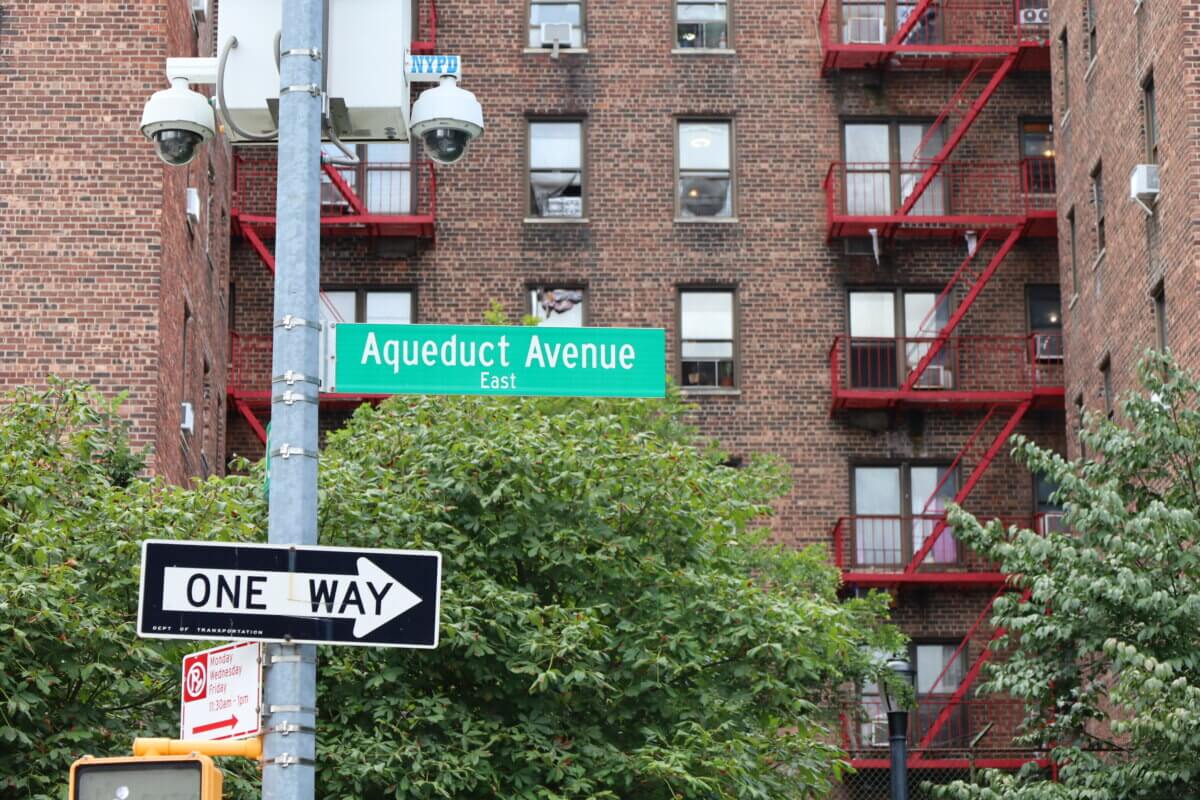Aqueduct Avenue in the Fordham section of the Bronx is named after the Old Croton Aqueduct, which was New York City’s first direct water source.
Photo ET Rodriguez
Two Bronx parks are up for consideration for city landmark status — one of which would be the borough’s first-ever designated scenic landmark.
During Tuesday’s meeting of the New York City Landmarks Preservation Commission (LPC), the board voted unanimously to calendar two Bronx sites — the Old Croton Aqueduct Trail stone walkway in Fordham and the Joseph Rodman Drake Park & Enslaved African Burial Ground in Hunts Point — the first step in the city’s landmark designation process. After sites are “calendared,” the LPC holds a public hearing for community input before casting a final vote.
Sarah Eccles, a researcher with the LPC, presented her findings on the cultural and historical significance of the Old Croton Aqueduct Walk — which is a raised stone walkway along Aqueduct Avenue in the Fordham section. If designated, it would be New York City’s 12th scenic landmark, and the Bronx’s first.
According to Eccles, the aqueduct was built in the 1800s in response to a bad cholera outbreak in New York City during a time when many people didn’t have water to drink, clean with or use to extinguish fires. With the help of between 3,000 and 4,000 immigrants — most of whom were Irish — it was completed in July of 1842, and became available for public use in October of that year.
The 41-mile long aqueduct that ran from Westchester to Manhattan was the first-ever direct water source to New York City. By 1890 it could carry 340 million gallons of water to the city per day, which was enough to sustain the growing population.
The majority of the pipe is far underground, but there is a section of it with a visible raised earthen and stone embankment, Eccles said — which almost immediately became a public walkway for many New Yorkers, including Edgar…
Read the full article here

Leave a Reply